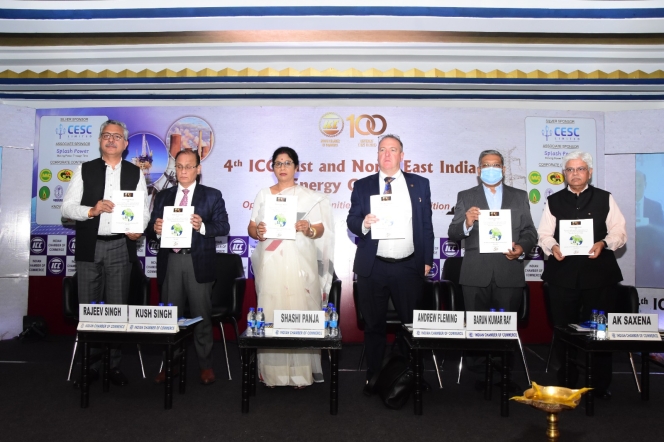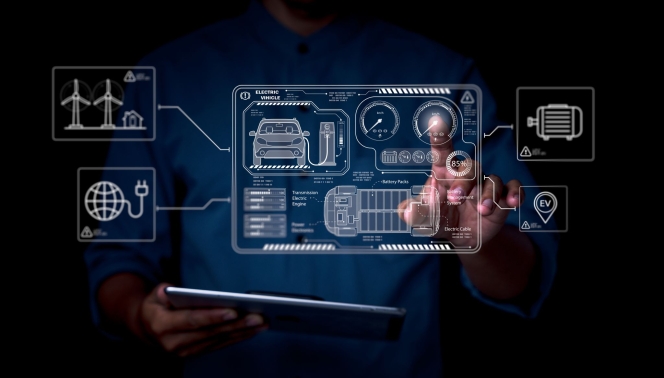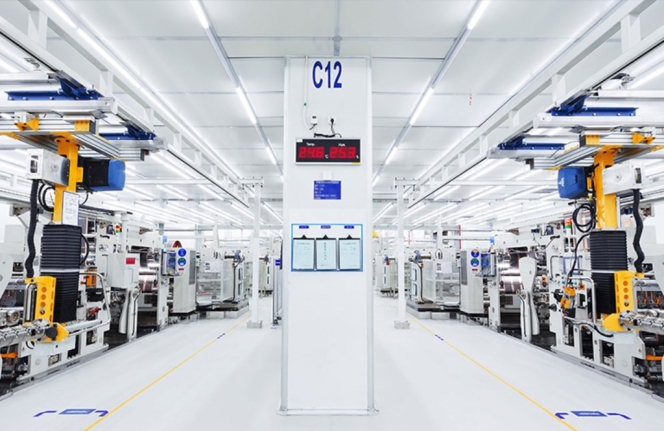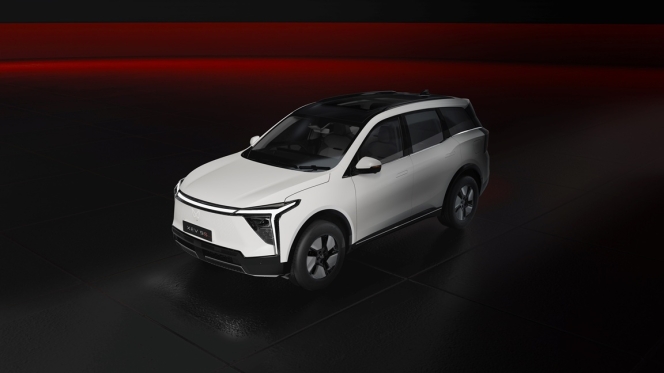Electric Mobility Needs More Than E-Buses: Kolkata Conclave
- By Gaurav Nandi
- May 23, 2025

India’s electric mobility transition is entering a decisive phase with public transportation emerging as the flagship for decarbonisation. At the 4th East and Northeast Energy Conclave held in Kolkata, A.K. Saxena, Senior Director at The Energy and Resources Institute (TERI), laid out an ambitious yet structured roadmap for how electric vehicles—particularly electric buses—can catalyse a cleaner, more inclusive transport future for India’s eastern and northeastern regions.
The event, organised by the Indian Chamber of Commerce, brought together policymakers, energy sector leaders and infrastructure experts to deliberate on regional energy transition strategies. Saxena’s keynote address stood out for its clarity on India’s electric mobility outlook, emphasising that public transport electrification must lead the charge.
Data-driven rollout in Kolkata
TERI’s work with the West Bengal Transport Corporation served as a case in point. The state aims to deploy 1,200 electric buses in Kolkata and Saxena revealed how technology and granular data are at the heart of this transformation. “We carried out a comprehensive traffic survey using GIS mapping and drone analytics to understand routes, congestion points and energy demand,” Saxena said. The insights helped identify optimal locations for EV charging infrastructure across the city.
The approach reflects a broader shift in India’s energy planning—from top-down mandates to data-driven micro-planning. Saxena emphasised that charging infrastructure is not just about installation but about siting, access, demand forecasting and grid-readiness. “The efficiency of public EV fleets hinges on planning that is grounded in real-world usage patterns,” he noted.
National push
In tandem with regional projects, the event also marked the launch of a new EV web portal and a short film on decarbonising public transport, both developed by TERI. These tools aim to enhance public awareness, empower local governments and standardise best practices.
Saxena pointed to TERI’s development of the e-Amrit portal for NITI Aayog—a national dashboard for EV adoption—as another example of institutional capacity-building in the e-mobility space. The platform offers guidance on EV incentives, vehicle types, charging options and ecosystem partners. “Digital platforms like e-Amrit can help streamline decision-making for city planners, fleet operators and even individual consumers,” Saxena added.
Broader energy transition
But Saxena was clear that electric mobility cannot be addressed in isolation, it must be integrated into a larger energy transition framework. He pointed out that e-mobility needs to be powered by clean, renewable energy and not simply displace tailpipe emissions with upstream fossil fuel usage.
“India must ensure that new incremental energy demand from EVs is met through renewables plus storage, not coal,” he said. TERI’s own roadmap recommends phasing out inefficient coal plants and meeting new demand growth through clean sources, particularly solar, wind and hydro.
Battery storage and pumped hydro have been prioritised as key enablers, especially for regions with variable renewables and peak demand mismatches. Saxena cited examples such as the Purulia and Turga pumped storage plants in West Bengal and Aparindavati in Odisha as vital to integrating e-mobility sustainably.
Coordinated ecosystem
One of Saxena’s boldest proposals was the formation of an East and Northeast Energy Transition Council. This cross-state platform would allow for better coordination between utilities, transport agencies and regulators. He argued that states like Odisha, Bihar, Assam and West Bengal can benefit from collaborative planning, especially on issues like charging infrastructure interoperability, storage strategy and renewable energy synergies.
He also floated the idea of setting up solar parks and EV charging corridors specifically tailored for intercity public transport routes. “Kolkata to Bhubaneswar or Guwahati to Shillong could become future-ready with fast-charging lanes,” Saxena said.
On the urban distribution front, Saxena advocated for the creation of distribution system operators (DSOs), specialised agencies tasked with managing decentralised energy flows including bi-directional EV charging, rooftop solar integration and grid balancing. “With vehicle-to-grid technologies on the horizon, the distribution system can no longer be passive,” he asserted.
Inclusive transition
Saxena closed his remarks with a reminder that India’s energy transition must be socially just and inclusive. Electrification of transport must not leave behind regions dependent on fossil fuels or traditional automotive sectors.
“Coal mining communities and internal combustion engine industries must be given retraining opportunities, livelihood alternatives and transition finance,” he said. Public transport electrification, he argued, presents an opportunity not only to cut emissions but to create green jobs, especially in battery servicing, EV manufacturing and smart infrastructure installation.
He acknowledged that the economics of EVs, especially in public fleets, may not yet be universally favourable. “But if we keep waiting for perfect conditions, the transition will remain academic,” Saxena said. “At some point, bold decisions have to be made.”
As India eyes near-universal e-mobility by 2040, Saxena’s remarks offered a realistic yet optimistic roadmap. The push to decarbonise public transport backed by smart tools, local data and clean energy is not just about vehicles. It is about shaping cities that are cleaner, healthier and more equitable for the future.
And in the alleys and arteries of Kolkata, India’s next mobility revolution may already be taking shape.
Trinseo Launches Fourth-Generation Binder For The Next Wave Of EV Batteries
- By MT Bureau
- December 03, 2025

Trinseo has introduced its latest innovation, the Fourth-Generation SBR Binder Platform, designed to meet the evolving demands of electric vehicles and battery energy storage systems. This development reflects the company's strategic focus on delivering high-performance materials essential for the global shift towards sustainable energy.
The platform results from advanced polymer science and collaboration with battery manufacturers, targeting key industry requirements such as increased energy density, superior durability and more efficient production. It provides a significant improvement in peel strength, enabling stronger electrode bonds, thicker coatings and higher manufacturing speeds. These attributes are vital for developing higher-capacity batteries that can extend driving range and improve storage solutions.
The inaugural product, VOLTABOND 109 Latex Binder, offers this next-generation performance with broad compatibility across various anode materials and manufacturing processes. Its design ensures excellent stability and low resistance, supporting faster charging and long-term reliability. To ensure robust supply, Trinseo will produce the platform locally within major global regions, enhancing responsiveness to battery production hubs.
Rooted in decades of expertise, this new platform establishes a foundation for future innovations tailored to diverse customer needs across the battery value chain.
CATL And Stellantis Begin Work On EUR 4.1 Billion Spanish Battery Plant
- By MT Bureau
- November 28, 2025

CATL and Stellantis broke ground on a EUR 4.1 billion battery plant in Figueruelas, Spain, on 26 November. The 50:50 joint venture will produce lithium-iron-phosphate battery cells and targets an annual production capacity of 50 GW/h.
The project, which is Spain’s largest battery factory, is backed by over EUR 300 million in EU funds, with production expected to start in late 2026.
According to unions, around 2,000 Chinese workers will help construct the site, a point of contention with local authorities and residents. Also, 3,000 Spanish staff are to be hired and trained later.
Spanish authorities and residents have voiced concerns about job opportunities for local workers and potential strain from the influx of foreign employees. CATL Vice President Meng Xiangfeng said earlier in November the company needed experienced technicians to build and fine-tune production lines, with plans to train local workers to take over operations gradually.
David Romeral, Director General of CAAR Aragon, a network of automotive businesses in the region, said: “We don’t know this technology, these components – we’ve never made them before. They’re years ahead of us. All we can do is watch and learn.”
The regional government is organising work permits for arriving workers while seeking to attract battery supply chain companies to Aragon. Some Chinese technicians and managers have already arrived, with several hundred more expected by year-end and nearly 2,000 by the end of next year.
CATL’s approach contrasts with its Hungarian site in Debrecen, where it hired mostly locals to build its European plant. However, a lack of local workers caused production to be delayed from late 2025 into mid-2026. The Figueruelas facility will serve as CATL’s third European manufacturing operation, alongside the Hungarian plant and one in Germany.
- Neuron Energy
- Equanimity Ventures
- Rajiv Dadlani Group
- Thackersay Family Office
- Chona Family Office
- Pratik Kamdar
- Rajesh Sehgal
- Rajiv Dadlani
Neuron Energy Secures INR 310 Million To Expand EV Battery Manufacturing For Four-Wheelers & Buses
- By MT Bureau
- November 27, 2025

Neuron Energy, an EV battery manufacturer, has raised INR 310 million in a Pre-Series B funding round led by Equanimity Ventures, Rajiv Dadlani Group, Thackersay Family Office and Chona Family Office, with participation from Family Offices and HNI investors. With this, Neuron Energy has raised INR 810 million to date.
The funding will be used to expand Neuron Energy’s manufacturing capacity to 3 GWh and to establish a fully automated, large-scale battery facility for electric four-wheelers and buses at Chakan, Pune. The capital will also strengthen the company’s R&D capabilities, accelerate domestic growth, and broaden its footprint in international markets.
Pratik Kamdar, CEO and Co-Founder, Neuron Energy, said, “This Pre-Series B round is a defining step in our mission to industrialise world-class battery manufacturing in India. As EV adoption accelerates, we are focused on building capacity, embedding automation, and pushing the boundaries of performance and reliability. This investment ensures we can deliver at scale, both in India and globally.”
The company said it operates with a low-CapEx and low-OpEx business model. It has been growing profitably year-on-year and is on track to achieve INR 2 billion in revenue this year. The company is also confident of achieving sales of over INR 9 billion, with profitability, over the next few years.
Rajesh Sehgal of Equanimity Ventures, added, "We see immense potential in Neuron Energy’s approach to EV battery innovation and scalability. Their focus on quality, automation, and energy efficiency aligns with the evolving demands of the EV industry in India and beyond. We are proud to support their next phase of growth as they scale into new vehicle categories and manufacturing capacities."
The new facility reinforces the company’s position in two-wheeler EV batteries and signals a strategic entry into heavier vehicle segments. This supports Neuron’s vision to become a comprehensive EV battery solutions provider.
Rajiv Dadlani, from the Family Office of the Rajiv Dadlani Group, said, "Neuron Energy demonstrates remarkable potential to become the market leader, with their renewed focus, in delivering top-quality products. The company and its founders are highly committed to delivering rigorously tested and safe-to-use Li-Ion smart batteries. We are confident that they will continue to thrive and set new standards in the industry."
Mahindra Intros XEV 9S Electric 7-Seater SUV At INR 1.99 Million, Deliveries From 23 January
- By MT Bureau
- November 27, 2025

Mahindra has launched the XEV 9S, an electric 7-seater SUV built on the INGLO platform, with prices starting at INR 1.99 million (ex-showroom). The XEV 9S is powered by MAIA, described as India’s fastest automotive mind.
The EV comes with a 70 kWh battery, delivering a power of 180 kW and 380 Nm of torque. It offers a claimed real-world range of 500 km from its LFP battery, which comes with a Lifetime Warranty. The SUV is stated to be the fastest 7-seater in its class, reaching zero to 100 kmph in 7.0 seconds, with a 202 kmph top speed.
The fully-loaded Pack Three Above 79 kWh variant is priced at INR 2.94 million ex-showroom with bookings open on 14 January 2026 and deliveries starting on 23 January 2026.
R Velusamy, President - Automotive Business, Mahindra & Mahindra and Managing Director, Mahindra Electric Automobile, said, “We have always believed that technology is meaningful only when it expands human possibility. The XEV 9S built on the INGLO electric origin platform does exactly that by creatin space – more than anyone else and gives a smooth and noise free ride. THE MAIA brain enables many of its high-tech features, making it the most advanced offering for its price.”
Nalinikanth Gollagunta, Chief Executive Officer - Automotive Division, Mahindra & Mahindra and Executive Director, Mahindra Electric Automobile, said, “The future of Indian mobility will belong to brands that don’t just electrify vehicles, but reimagine categories. With the XEV 9S, we’re not just playing in the EV segment, we’re expanding it. This SUV signals the start of a BIG new electric era for Mahindra - one built on scale, on purpose, and on a deep understanding of how India moves. The attractive prices starting at ₹ 19.95 Lakh make a very high-tech product accessible, with bookings opening on Jan 14 and deliveries start on Jan 23.”
The XEV 9S is an expression of Mahindra’s Heartcore Design philosophy, featuring a stance, lines, a gloss finish and interiors. The vehicle is designed to be silent on wheels.
Key highlights include:
- Space: Offers 4,076-litre of cabin space (for front and second row), boot space up to 527-litre and 150-litre of Frunk space. The third-row features 50:50 split seats.
- Suspension: Features Intelligent Adaptive dampers with i-Link at the front and 5-Link independent suspension at the rear.
- Driver Aids: Includes L2+ ADAS with five Radars and one Vision Camera, Driver Drowsiness Detection with DOMS (Eyedentity) and Secure360 Pro for live view and recording.
- Interior Comfort: Features Powered Boss Mode, ventilated second row seats, recline and sliding adjustment, sunshade for second row windows, Acoustic ‘Laminated’ Glass and wireless phone charging.
- Technology: Equipped with Brake by Wire with IEB, High Power Steering with VGR, VisionX – AR HUD, AutoPark Assist, and 140 features including Digital Key, NFC and Charge Scheduler.
- Entertainment: Includes a 16-Speaker Harman Kardon Audio system with Dolby Atmos, three 31.24 cm screens, 5G Connectivity and Fun & Work Apps.
- Efficiency: Running costs are INR 1.2 per km, with maintenance costs of INR 40 paise per kilometre and negligible road tax. Business owners benefit from 40 percent depreciation.
Pratap Bose, Chief Design & Creative Officer - Auto & Farm Sectors, Mahindra & Mahindra, said, “Designing the XEV 9S wasn’t about adding lines to a surface, it was about shaping a feeling. We wanted it to feel like stepping into a personal sanctuary, yet one that carries the pulse of modern India. Electric gave us the canvas; INGLO gave us the freedom to sculpt light, space and comfort. The result is an SUV that wears its size with grace and its technology with humility. It’s expressive, it’s calm, and it’s unmistakably Mahindra - built for a nation whose aspirations are only getting bigger.”






Comments (0)
ADD COMMENT